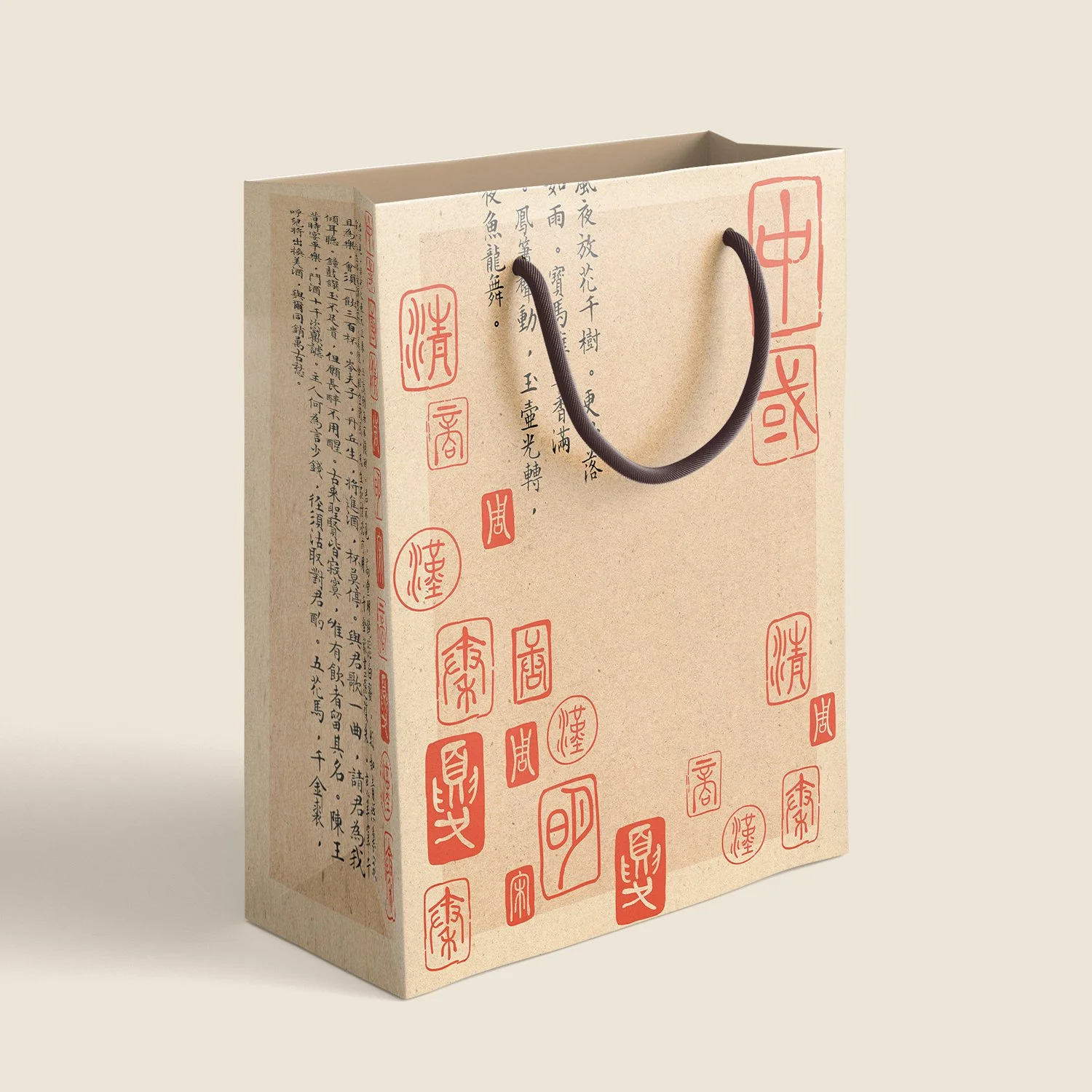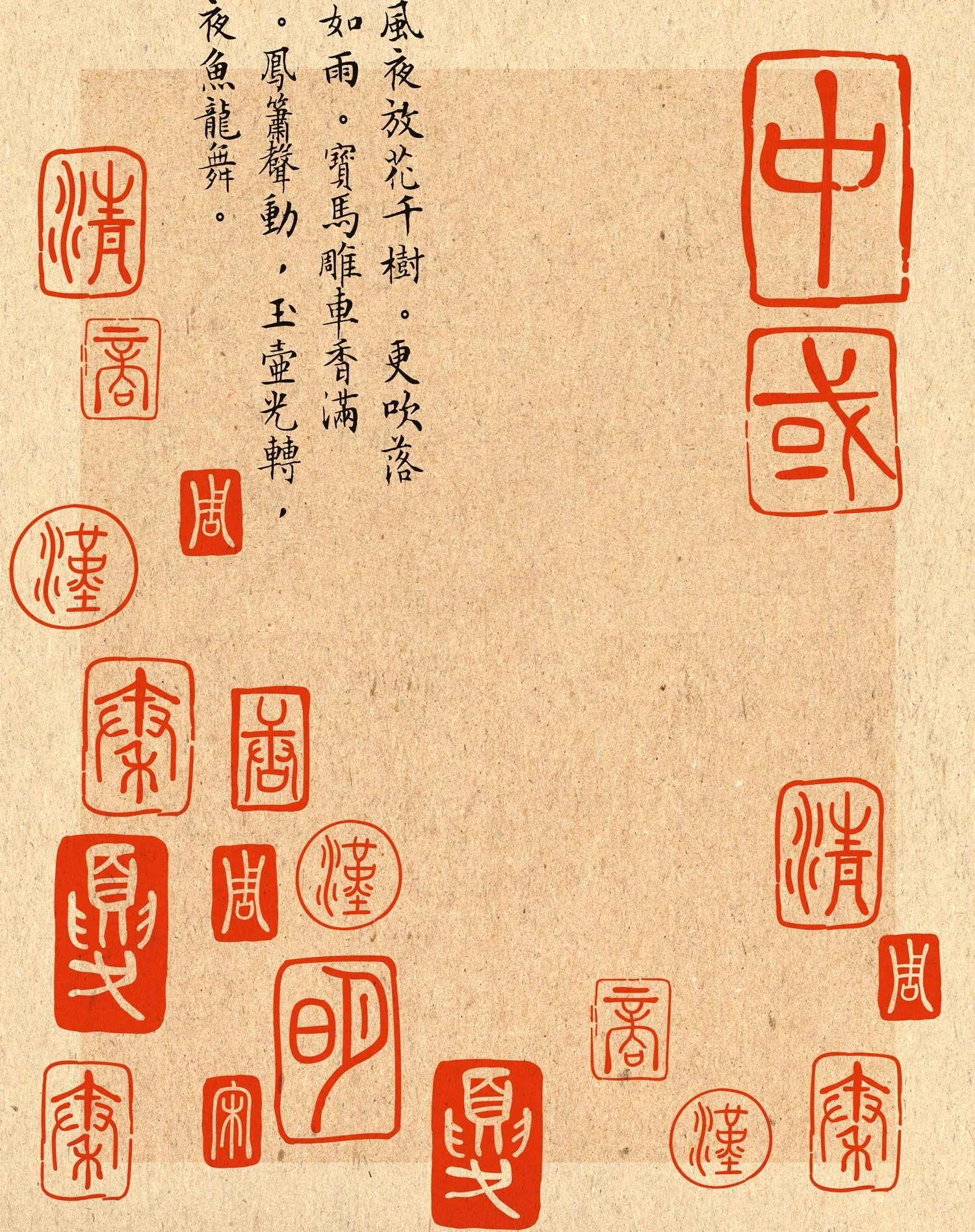Caroline Zhang redefines what “Made in China” really means with “Dynasties in a Bag,” Chinese National Bag Design
Caroline Zhang (IDEA BDes 2026) won an RGD Honourable Mention for “Dynasties in a Bag,” a luxury bag design redefining “Made in China” by incorporating traditional seal stamps with Chinese dynasty names, symbolizing the nation’s rich cultural and artistic history. Created during their first year, the project faced challenges in balancing cultural representation and design execution, but their research-driven vision led to success.
Check out this award-winning student project!
Chinese National Bag Design
“Dynasties in a Bag” won an Honourable Mention in RGD’s 2023 Student Awards. This luxury bag was created to represent the nation of China, challenging the notion that “Made in China” means poor quality. The use of seal stamps and texture harkens to the rich trade and art culture found in Chinese history.
The traditional seal stamps reference collectors stamping their names onto art, showcasing its value. The characters themselves are the names of the past Chinese dynasties, representing the rich and cultured history of the nation.
Originally seal stamps were a method for powerful people to sign off on documents. As this practice became more prevalent, art collectors would stamp the pieces they procured. The number of stamps on a piece became a symbol of its value and artistic merit.
The characters making up the stamps represent the various Chinese dynasties. Each dynasty came with its own set of innovations in both the art and technology fields. By combining the dynasty names with seal stamps, I wanted to redefine what “Made in China” really means.
Instructor: Vida Jurcic
Awards: RGD Student Award, Artista Award for 1st Year Student, Honorable Mention
Night-Shining White by Han Gan (ca. 750) in the Met
About the course
IDES 142 Survey and Principles of Design II examines graphic design and typography from the mid-20th century to the present day through an integration of history, theory, and practice. Students are introduced to modernist, post-modernist, and information age movements as an aesthetic and philosophical basis of modern graphic design and advertising. Applied projects, including the integration of concept with design principles, are integral to the course.
What challenges did you face during this project, how did feedback or critique influence your progress, and were you consistently confident in your ability to execute the concept or idea?
The biggest issue for this project was deciding how to represent the concept I had in mind. I wanted to represent so much of Chinese culture as well as its value to recontextualize modern stereotypes. I still feel like a consumer may not understand the symbolism of the seal stamps or that they are the names of dynasties on there. Design-wise I did this in my first year so I was still very new to everything. I infamously didn’t use grids and the stamp illustrations took much longer than they should have, but I had a strong visual image in mind based on research I’ve done.
About RGD
Through the RGD, Canadian designers exchange ideas, educate and inspire, set professional standards and build a strong, supportive community dedicated to advocating for the value of design.
The Association of Registered Graphic Designers (RGD) is Canada’s largest professional association for graphic designers. The association’s membership of more than 4,000 people includes firm owners, freelancers, managers, in-house designers, educators and students.
Members work in the design disciplines engaged in developing effective communications, including editorial design, motion design, brand design, environmental design, UX design and information design.
The RGD runs numerous industry events and initiatives, including DesignThinkers, Canada’s largest annual conference for graphic designers; Creative Earners, Canada’s comprehensive salary report for creatives; awards programs for branding, design educators, emerging designers, in-house design, social good design and students, and much more.
The RGD's annual Student Awards competition recognizes communication design excellence from students across Canada.
About IDEA School of Design at Capilano University
IDEA School of Design offers two career-oriented programs for the next generation of creative professionals.
The Bachelor Of Design In Visual Communication is a four-year undergraduate degree with a variety of career outcomes in the creative field. Students can specialize in branding, Illustration or interactive design in upper years.
The Interaction Design Diploma is a two-year program with career outcomes in the field of digital product design and user experience. The focus is on creativity, design thinking, and problem-solving.
For more on Caroline
Insta: @wiggggggggggle
Behance: behance.net/wigggle




